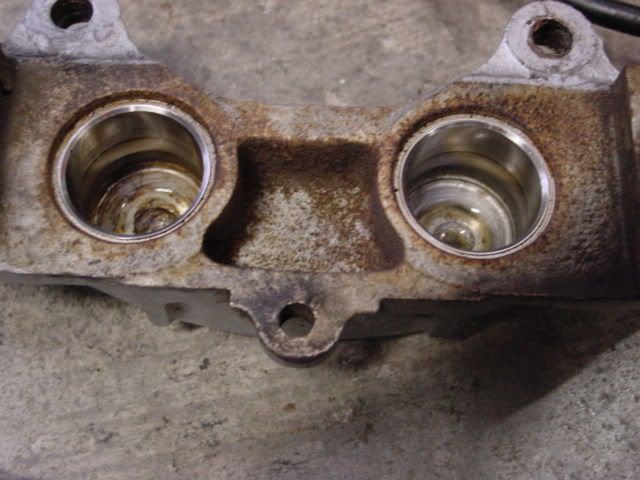Topic: How to tell if my calipers have been lined
in Forum: C3 Driveline Components
Moderator
Most rebuilders will stamp their logo/name/part number on the calipers after they build them. Look for something stamped on them.
The only other way to tell is to spit the calipers, pull the pistons out, and look.

Joel Adams
C3VR Lifetime Member #56 ![]()
My Link 
(click for Texas-sized view!) NCRS
"Money can't buy happiness -- but somehow it's more comforting to cry in a CORVETTE than in a Kia"

Moderator

I've seen some calipers sleeved with bronze, too, which is still obvious when looking at them.
Also....most original, non-sleeved caliper bores will be pitted/rusty/rough surface...not nice, smooth, and "shiny" like in the above pic.

Joel Adams
C3VR Lifetime Member #56 ![]()
My Link 
(click for Texas-sized view!) NCRS
"Money can't buy happiness -- but somehow it's more comforting to cry in a CORVETTE than in a Kia"
The reduced piston to wall clearance inherent with the O-ring design (when installed in a floating piston caliper), eliminates what Duntov said was
necessary. Obviously, the O-ring piston is not free to follow the disc (rotor). The designed-in balance between the lip seal and the piston spring is completely ignored with the aftermarket O-ring pistons. When cornering forces cause spindle deflection, the brake system is put in a bind. As Duntov said, lip seal pistons have the clearances necessary to eliminate this bind and piston knock-back. O-ring sealed pistons do not, and are subject to sticking in the bores unless the caliper in which they are installed is a floating caliper design.Bottom Line: If your Corvette is a static display show car, O-ring calipers are a good option. If you drive your Corvette, stick with Duntov’s design. If you drive your car only once a month, just depress the brake pedal every couple of weeks, and your lip seals should be leak free for at least a decade.
This comes from good articles I have on the Corvette brakes

